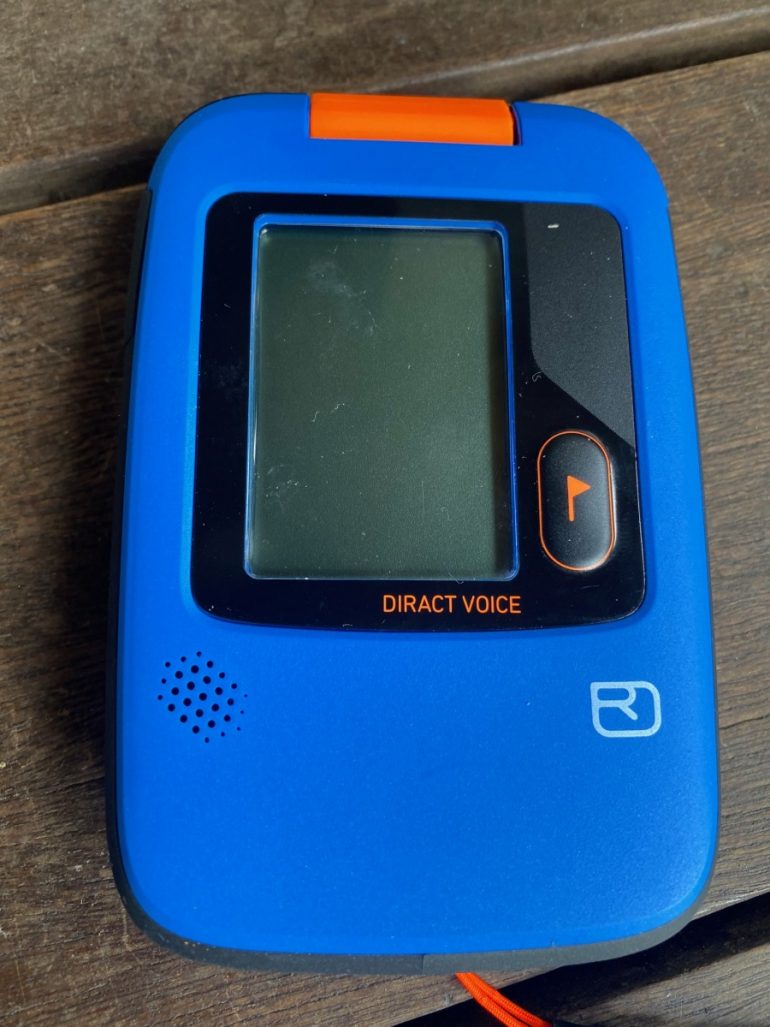
The Ortovox Diract Voice avalanche transceiver is the first to offer real-time voice commands and a rechargeable lithium-ion battery.
By Kevin Grove:
I remember a long-ago conversation with my friend and prolific adventurer, Dick Dorworth, where he asked the question, ”In your backcountry career, how many slopes would you have passed on skiing if you had no avalanche rescue gear?” Dick’s logic is that backcountry skiers potentially make riskier decisions thinking all the safety gear will protect them. Maybe, but maybe not. According to a 2009 study from Canada, about 25% of avalanche fatalities result from trauma. Indeed, fatalities are occurring every year where people have the right equipment to no avail. Dick ruminates on avalanche gear, including avalanche avoidance, avalanche survival and search and rescue. He quips, “Of the three categories of avalanche gear, the first—avoidance—is by far the most significant, important and useful.”
I won’t go into the many pillars of avoidance here, but everyone traveling in avalanche terrain should take an avalanche education course and continue learning their entire career in the mountains. Recent studies point to older, more experienced backcountry travelers dying more frequently than their younger, less experienced counterparts. Experience alone is not the silver lining protecting us in the mountains and may, or may not, lead to the backcountry’s wicked learning environment.
So, do we need avalanche gear? The answer, of course, is yes! We need a beacon, shovel and probe in avalanche terrain, and perhaps, more importantly, we need to be solid at using all three tools. Again, we need to be good, as every second counts and makes a difference between a rescue mission and a body recovery.
Humans are fallible and make mistakes. You can be sure that I was thankful I had my avalanche rescue gear on when I made this mistake in January of 2010. Fortunately, my beacon was not needed and ultimately, a whippet helped pop me out of the moving snow. I never thought of a whippet as an avalanche rescue tool before this particular day. Mountain travel is complex, with many variables that can change by the minute, so we need to carry rescue gear to stack the deck in our favor when mistakes happen.
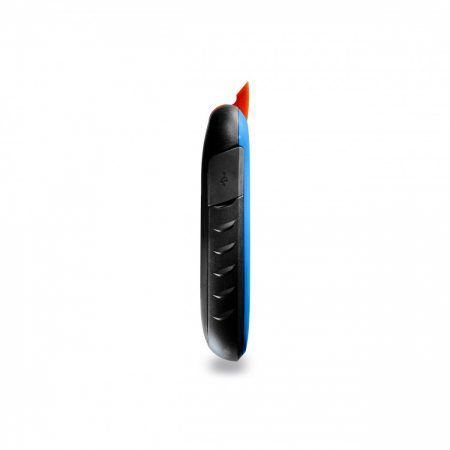
This image from Ortovox shows a side profile with the send to search mechanism flipped up into search mode.
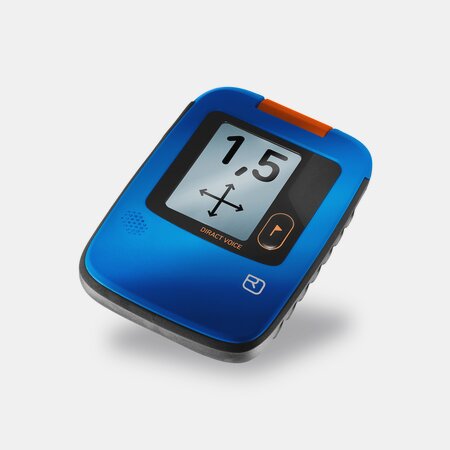
This image from Ortovox shows the display when in close proximity to the victim.
Avalanche beacons have come a long way since my first Ortovox F1 analog single antennae beacon. Along with my Merrell Supercomps (yes, I began on tele’s in the backcountry!) and Tua skis as long and narrow as a piece of spaghetti, the F1 was a crucial piece of my kit. I took an avalanche class from Ron Johnson, Karl Birkland and others and spent countless hours practicing with my beacon. Looking back, I am thankful for all the advances in beacon technology and know that every second counts if a search is ever required.
For the past several years, my beacon of choice was the Pieps DSP Pro until the recall last season due to some failures of the mechanism moving the beacon from search to send to off. I liked the DSP Pro and spent many hours training, testing in an Avalanche Level 3 course and Ski Guide Course, and using it throughout hundreds of amazing days in the mountains. I felt like my personal DSP Pro was still functioning as advertised without any cracks or malfunctions of the sliding mechanism, but I still want to stack the deck as tall as possible in my favor, along with my ski partners.
This summer I switched over to the PIEPS Pro BT and have been happy with the functionality thus far from some simple living room tests. The Pro BT is similar to the DSP Pro, so the learning curve was quick.
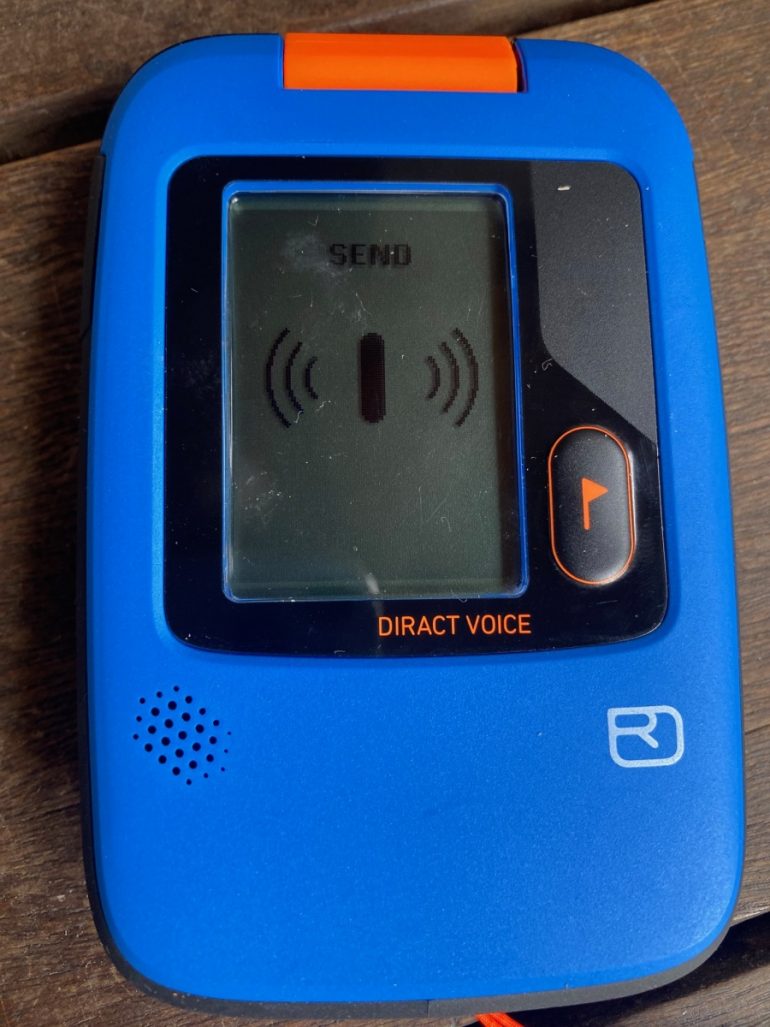
The Diract Voice screen in send/standby mode. Ortovox says the screen readout is real-time and easy to read in various light conditions.
Then opportunity knocked: enter the new Ortovox Diract Voice beacon. The Diract Voice is the first avalanche transceiver with integrated voice navigation. Will this be a game-changer and/or significantly reduce search times? I think time will tell and may depend on one’s level of training and how much prior experience the user has with avalanche transceivers.
At first glance, from my bedroom, a highly scientific study environment for transceiver practice, I like the Diract Voice. The operation of the orange flip mechanism to move from send to search modes is intuitive and simple. It is possibly the most straightforward beacon mechanism I have ever operated and works well with gloved hands.
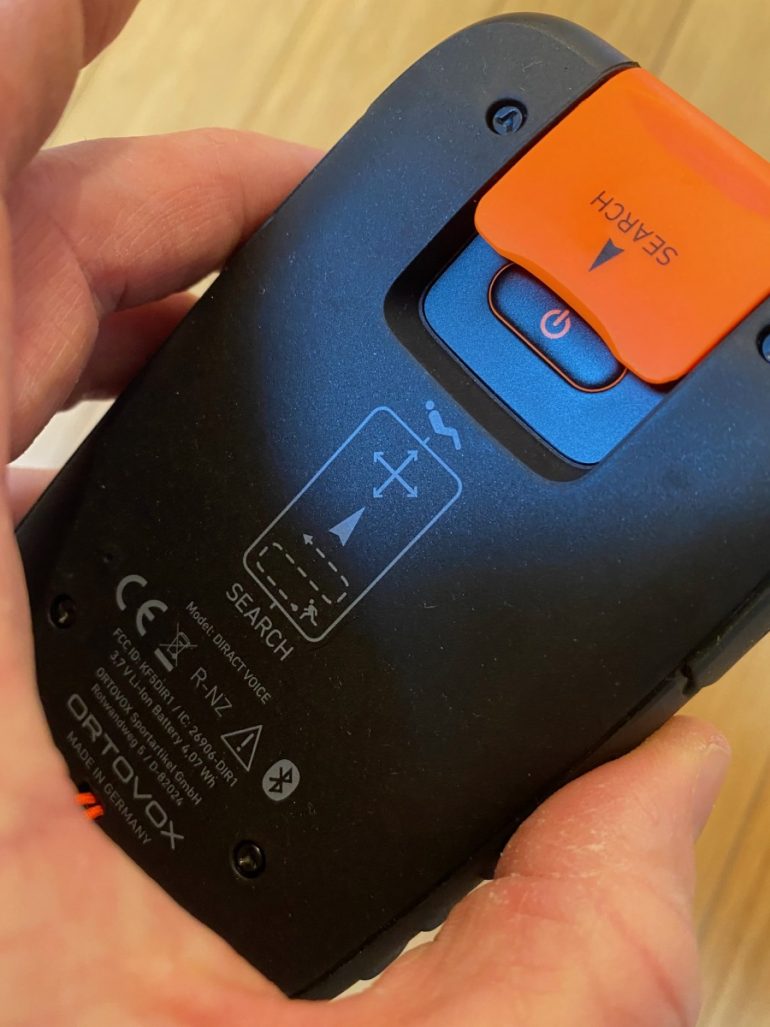
The orange tab – which switches the Diract Voice send to search – is simple and functional.
Simple commands like “Send activated” and “Run in 50-meter search strips and look out” help guide the user. I was impressed by the intuitive group check function that is initiated after powering the beacon on (press the only flag button on the beacon to initiate the group check.)
A simple beep alerts you when powering the beacon off, and the screen prompts you to verify with“Turn Off?”. You also must press the flag button again to let the beacon know that indeed you are at the bar and ready to power down and sip a cold one. The chest harness is sleek and comfortable, allowing easy access to the beacon. I appreciated a long leash for both harness carry and pocket carry to allow enough room when searching. My DSP Pro had such a small leash system that it needed modification to search the snow.
I performed a few practice searches burying beacons in the huge pile of unfolded laundry dubbed Mt. Everest. The beacon performed well, and while I don’t anticipate this being a game-changer for advanced users, I think it could potentially decrease search times for beginner or intermediate users. Commands like “Drop to the snow surface” and “turn around” could be very useful for the uninitiated.
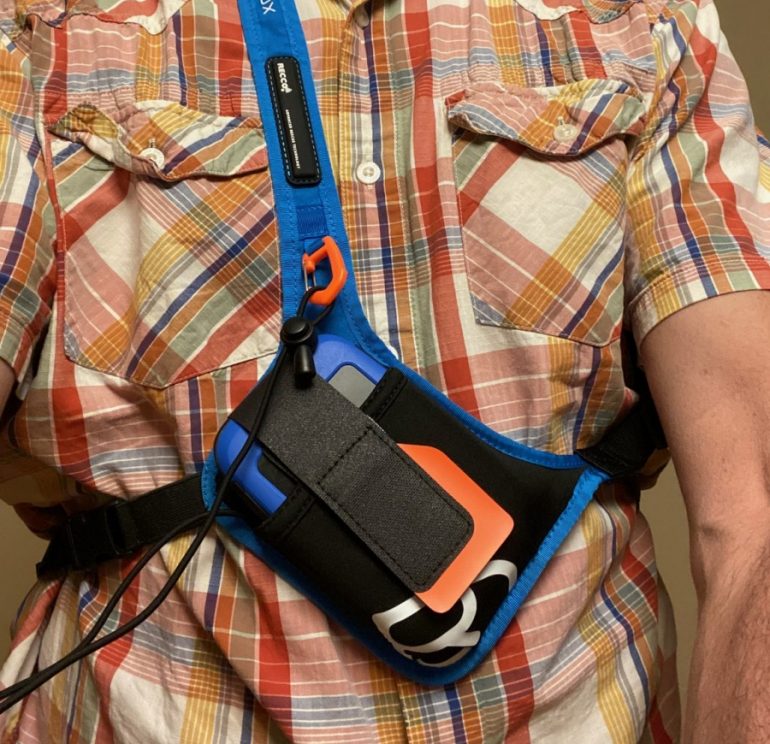
The chest harness is sleek and comfortable, allowing easy access to the beacon. It features a long leash for both harness and pocket carry, allowing enough room when searching.
I teach level 1 and 2 recreational avalanche courses. I have seen all the possible mistakes one can make, including blowing right by the buried beacon and continuing for another 30-40 meters. I think a voice saying to you, “turn around” will be helpful, especially given the heightened stress and brain chemistry going off during an actual search.
I am excited to continue exploring this beacon this winter. I will put it in the hands of some students with limited prior beacon search knowledge and experience and monitor the outcome. I also envision some beacon practice games with my three and five-year-old daughters and their cousins this winter to see how the Diract Voice performs along with my PIEPS Pro BT. I’ll let you all know the outcome of all these experiments, along with how my personal use of the Diract Voice goes this winter.
We’ll have more info on battery charge longevity and audio from the Voice Diract in our long-term review.
The Diract Voice is powered by a rechargeable lithium battery and retails for $380.00.
Diract Voice Stats:
-Weight: 210g
-3-antennas
-Transceiver dimensions: 79mm x 120mm x 23mm
-Can update software via Bluetooth
-Group check function
-5-year warranty with registration
-Includes a harness.
-Powered by a rechargeable lithium ion battery.
-A RECCO® reflector is integrated into the Diract Voice’s design.
Purchase an Ortovox Diract Voice transceiver.
Kevin Grove is an Engineering Professor at Central Oregon Community College and has been an avid backcountry skier and climber for the past 25 years. He grew up in Montana, attended college at Montana State University in Bozeman, and now calls Bend, Oregon home. He is passionate about snow science and loves to share this passion with COCC students and with the Central Oregon outdoor community. Kevin is AAI Level 3 trained.
Beyond our regular guest bloggers who have their own profiles, some of our one-timers end up being categorized under this generic profile. Once they do a few posts, we build a category. In any case, we sure appreciate ALL the WildSnow guest bloggers!
